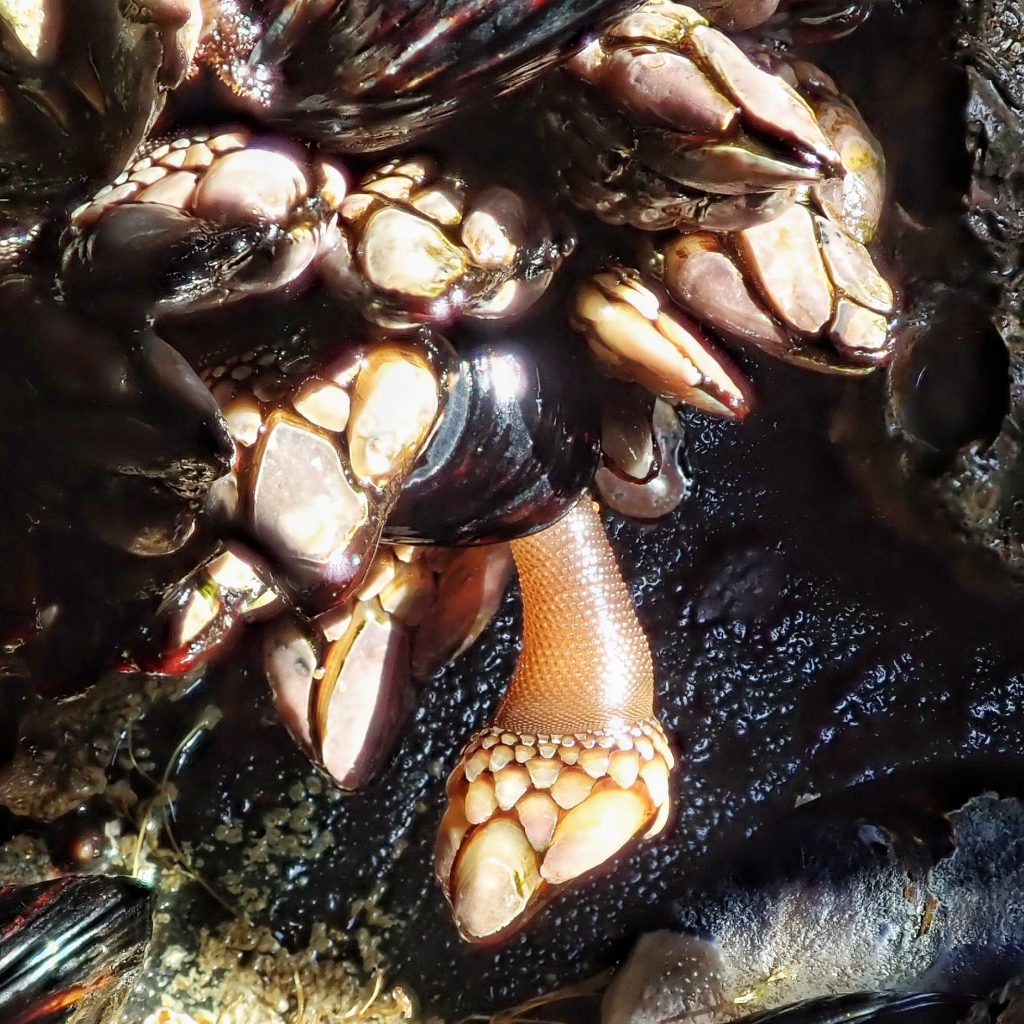
Today lets talk about the weird and wonderful world of the Gooseneck Barnacles. I am somewhat embarrassed to admit that I hadn’t before picked up on the fact that barnacles in general are classed with the crustaceans (I also just realized that Crustacea is now considered to be a subphylum, rather than a class, although it seems the idea has been accepted for at least a decade). Like me, scientists believed barnacles were mollusks for hundreds of years. Unlike me, John V Thompson thought to study them, and he discovered that their larval stages were akin to those of crustaceans, and published those findings in 1830, so I should have noticed this by now. Charles Darwin was so intrigued by the evolutionary relationships of barnacles that he studied them extensively whilst also working on ‘On the Origin of Species’.
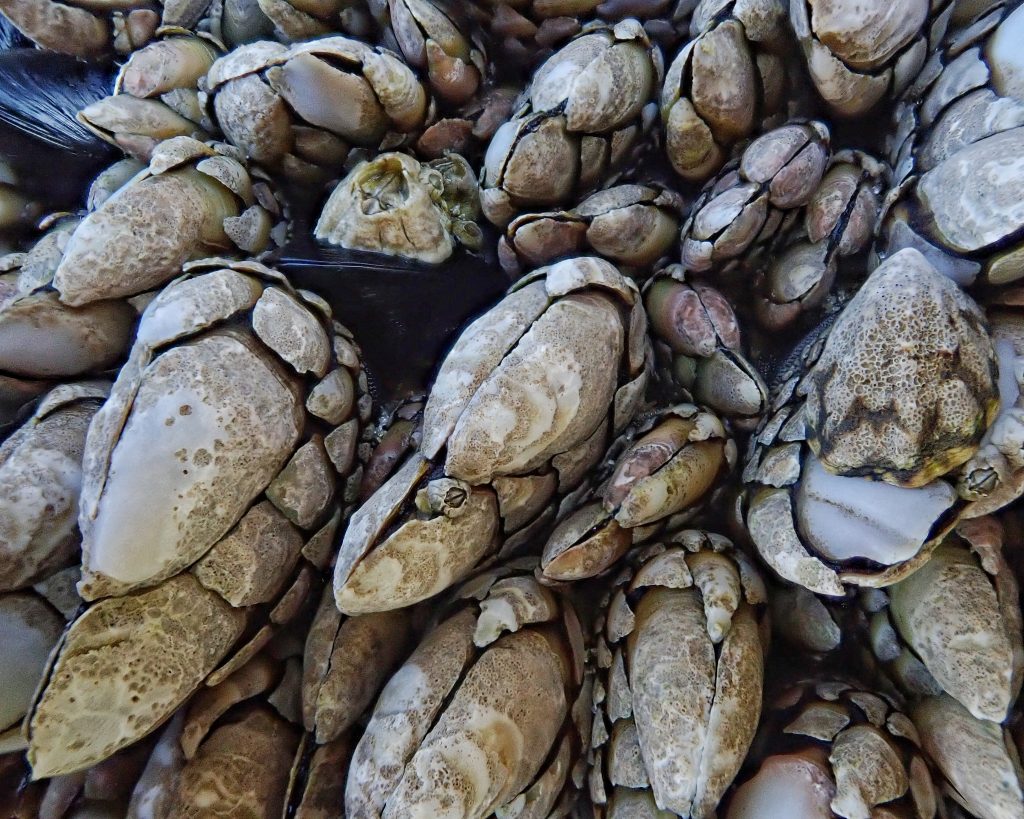
Even further back in time, before empiricism had entered the realm of the study of natural history, Barnacle Geese (Branta leucopsis) were thought to ‘spontaneously generate’ from gooseneck barnacles (thus the common names of each species), because young geese were never seen, adults disappeared and reappeared cyclically, and there was a certain similarity of form between the geese and barnacles. We can now see how ridiculous this is, but at the time they took it so seriously that they thought the geese could be eaten at times that their Christianity forbade meat.
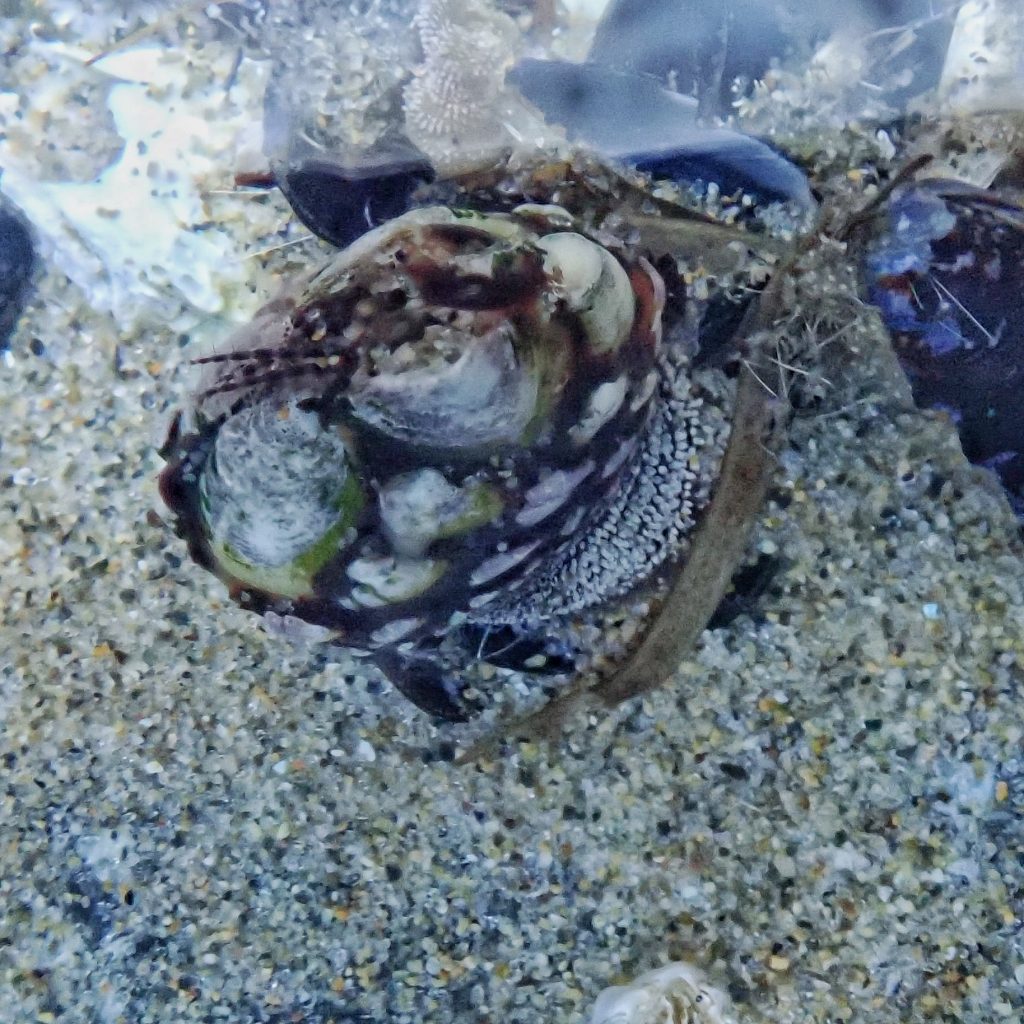
Barnacles do have legs, but these sessile creatures don’t use them to walk. In fact they are anchored by their head! Pollicipes polymerus secretes a strong adhesive from small antennae on the peduncle (the ‘neck’, a long rubbery stalk covered with small bumps) which permanently attaches it to the rock, and can withstand very heavy surf. The legs (which are called cirri) are in two groups of three pairs, and are located in the capitulum (the uppermost portion of the barnacle, which is protected by five large and many small plates), along with most of the other organs. The posterior group of cirri are longer, branched, and extend when the plates have opened due to the presence of water. They orient themselves towards the flow of water, and in locations where the majority of that water is runoff from waves, they orient towards the runoff. These posterior legs snag potential foodstuffs as the water passes over them, and are then cleaned off by the shorter, anterior legs, which have many small hairs on them, and the resulting haul is then passed to the mouth, which sorts the edible from the inedible using chemoreceptors on the mandibles, maxillae, and palps.
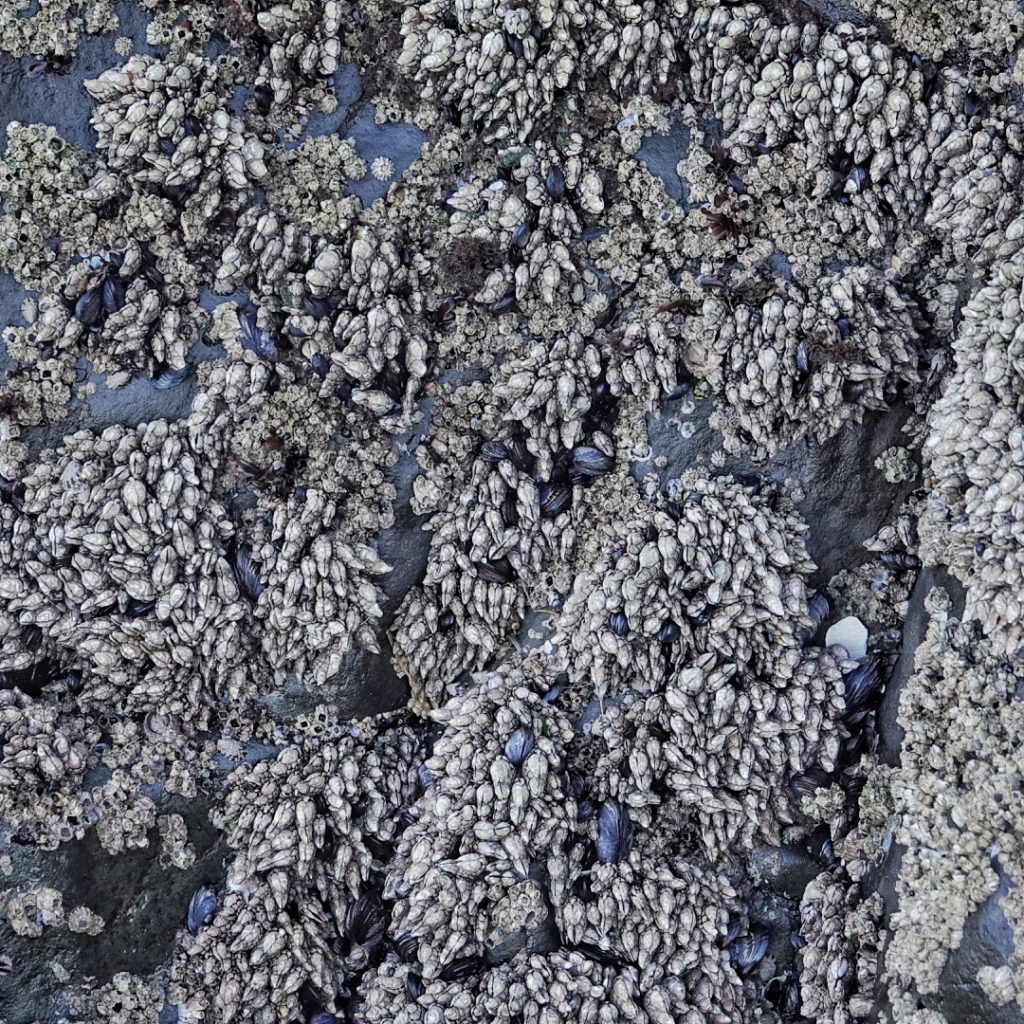
Gooseneck Barnacles are hermaphroditic, as are most barnacles, and both sets of gonads are in the peduncle. Once a barnacle has placed mature eggs in their mantle cavity, they release a pheromone that announces their readiness for insemination. Since they are sessile, relative proximity is important for cross fertilization, and young barnacles searching for an attachment point home in on existing Gooseneck Barnacles to promote this. They do have an extensible penis but it barely reaches the length of the peduncle (unlike many other barnacles where it may be up to 8 times the size of the body), so they need to be very close neighbors to breed directly. It had been assumed that isolated Pollicipes polymerus that were found to be bred had simply practiced self fertilization, and in some cases this may be so. But a study (Barazandeh, et al.; 2012) showed that individuals often leak sperm, and that other barnacles do capture that sperm from the water, an eventuation which had hitherto been thought to be impossible for this species. Gooseneck Barnacles breed from early spring into fall, with a peak in July, and may produce up to 7 broods per year (although 3-4 is the norm), producing up to 20,000 viable young per brood.
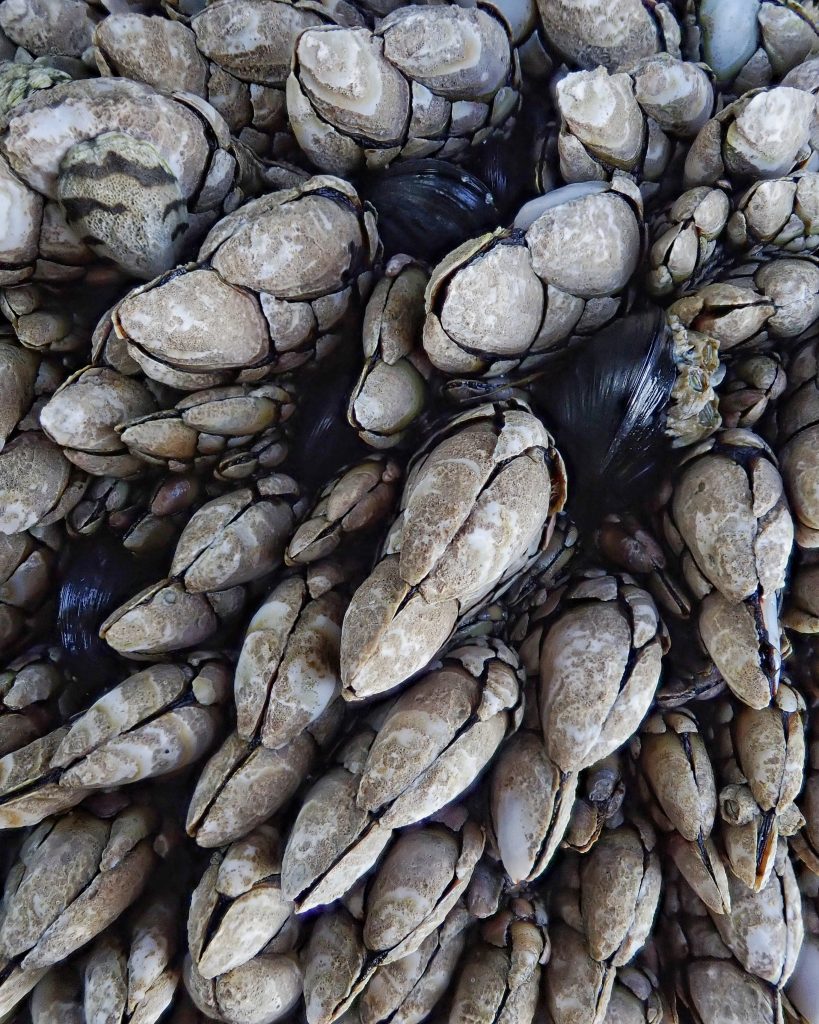
Gooseneck Barnacles were used as a food source by indigenous peoples, and a close relative, Pollicipes pollicipes, is considered to be a delicacy in Europe, where it is native. However, the edible portion is only inside the peduncle, and is very small, meaning that not only are large numbers required, but very high prices are paid for them, and over harvesting in Europe has led to scarcity of that species. P. polymerus is now being harvested, under strict regulations to maintain its sustainability, on Vancouver Island, BC, and those are being shipped to the gourmands of Europe.
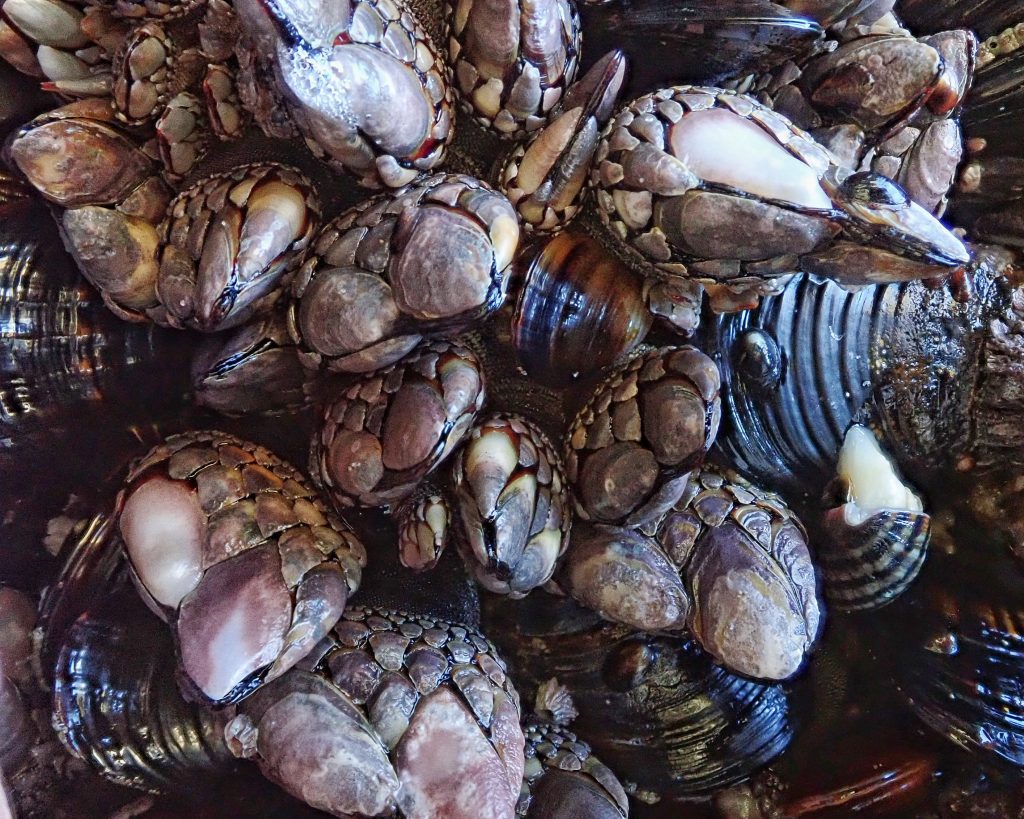
Description-May be up to 8” long, but more commonly seen in the 2-4” range; peduncle is flexible, reddish brown to brownish black, leathery with small bumps, and is 1/2-3/4 as long as the capitulum; capitulum is composed of 5 large, and many small, white, grey, or brown plates; usually grows in tight colonies, often with young conspecifics near the base;
Similar species–Lepas anatifera has only five large, smooth, bluish plates on the capitulum, and lacks any small ones, and is a creature of the open ocean that is only found on land when the driftwood, kelp, or other debris it is attached to washes ashore.
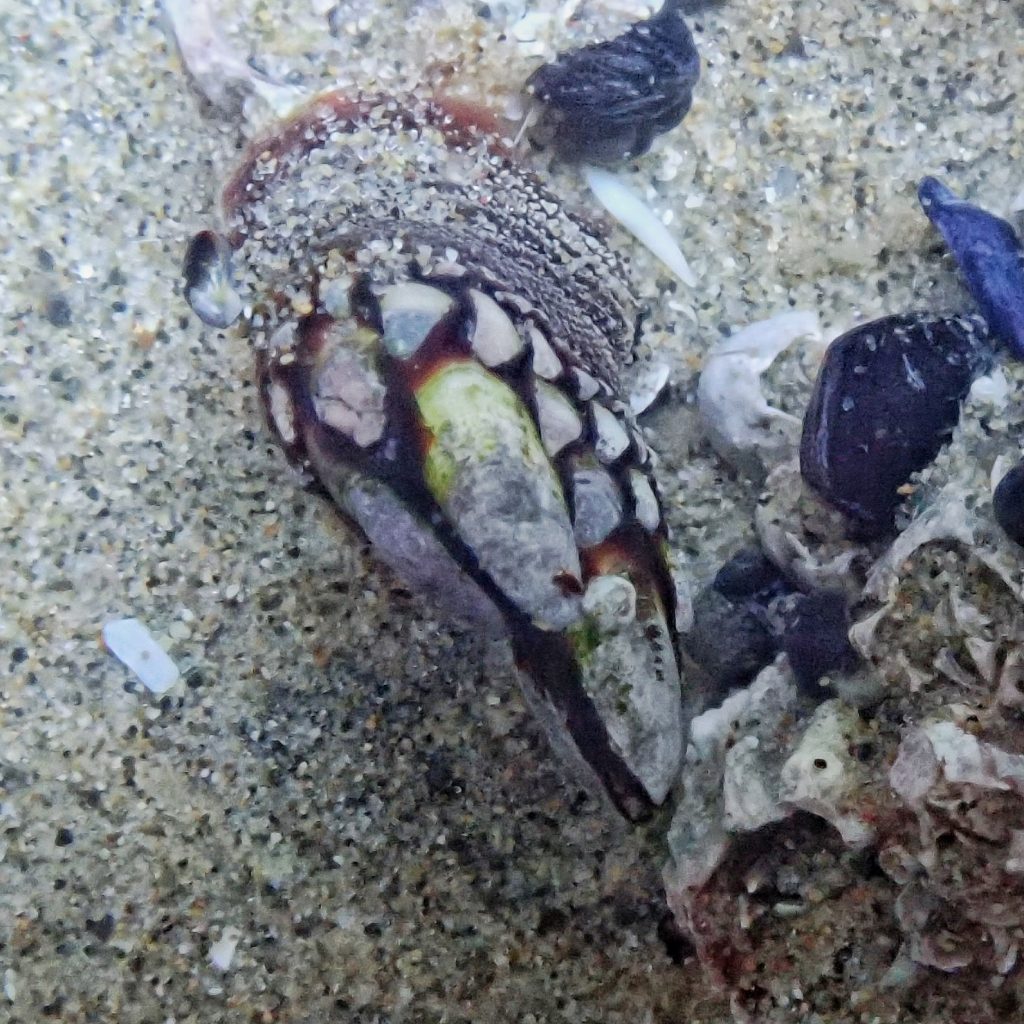
Habitat– Solid surfaces (primarily rock) of the mid to high tide zones of the open coast, although it is not uncommon in the Puget Sound; very common in Mytilus californianus colonies; has been found growing on other barnacles on the skin of Humpback Whales.
Range-Pacific coast of North America from Southeast Alaska to Baja California.
Eats-Small organisms such as plankton, cyprid larvae, small clams, hydroids, and amphipods.
Eaten by-Oystercatchers and other sea birds, Glaucous-winged Gulls and other Larus sp., sea stars (particularly Pisaster ochraceus), and various sea snails.
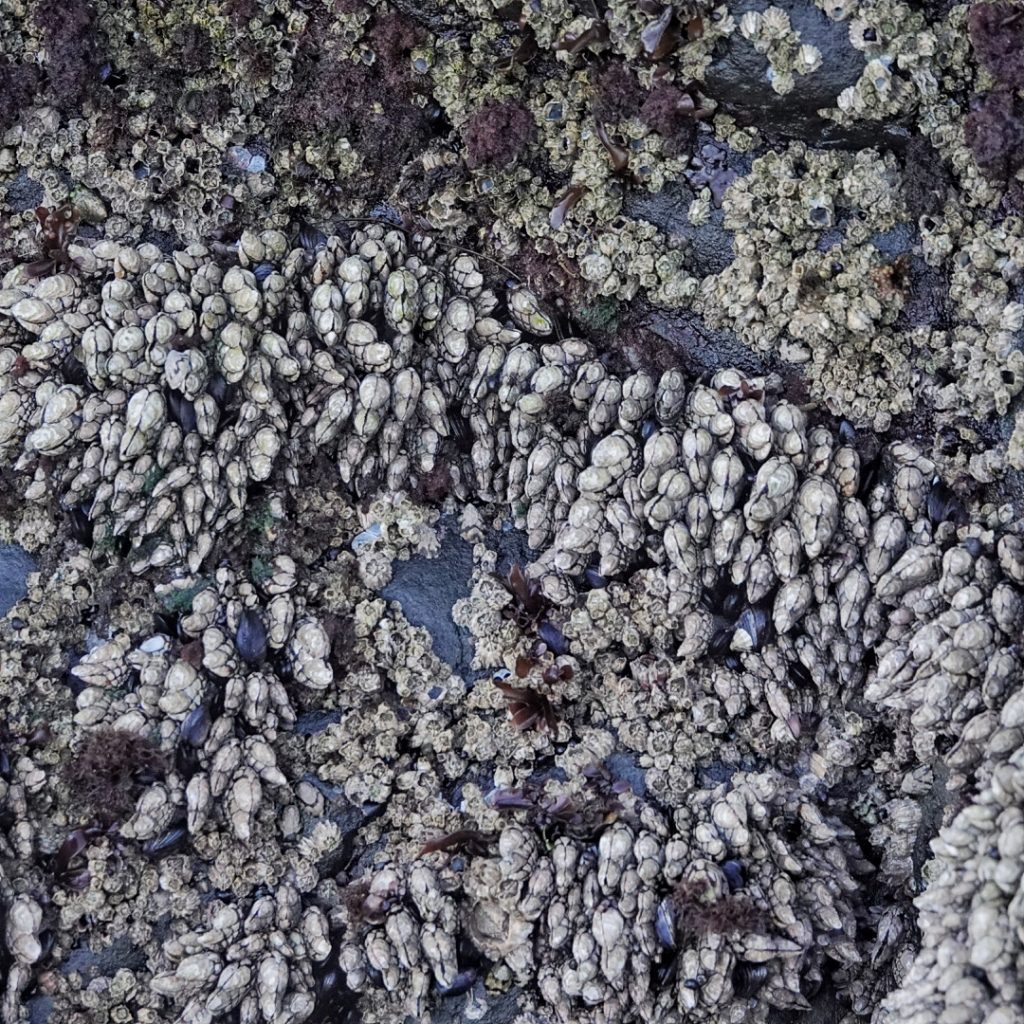
Adults active-Year around
Life cycle-Hermaphroditic; eggs are fertilized in mantle cavity and brooded for 3-4 weeks; larvae are nauplius, meaning they use their antenna to swim, and they go through 6 moults in about 40 days before becoming cyprids, a non-feeding stage characterized by the search for an attachment spot; sexual maturity takes 5 years, and full growth isn’t achieved for 15 more; overall longevity appears to be unknown.
Etymology of names–Polycipes may be from the Latin for ‘strong head’, which would seem appropriate for this genus, but I cannot find Leach’s original description. The specific epithet polymerus may be from the Greek for ‘many thighs’, but I have no idea what that may reference, because I can’t find Sowerby’s original description either.
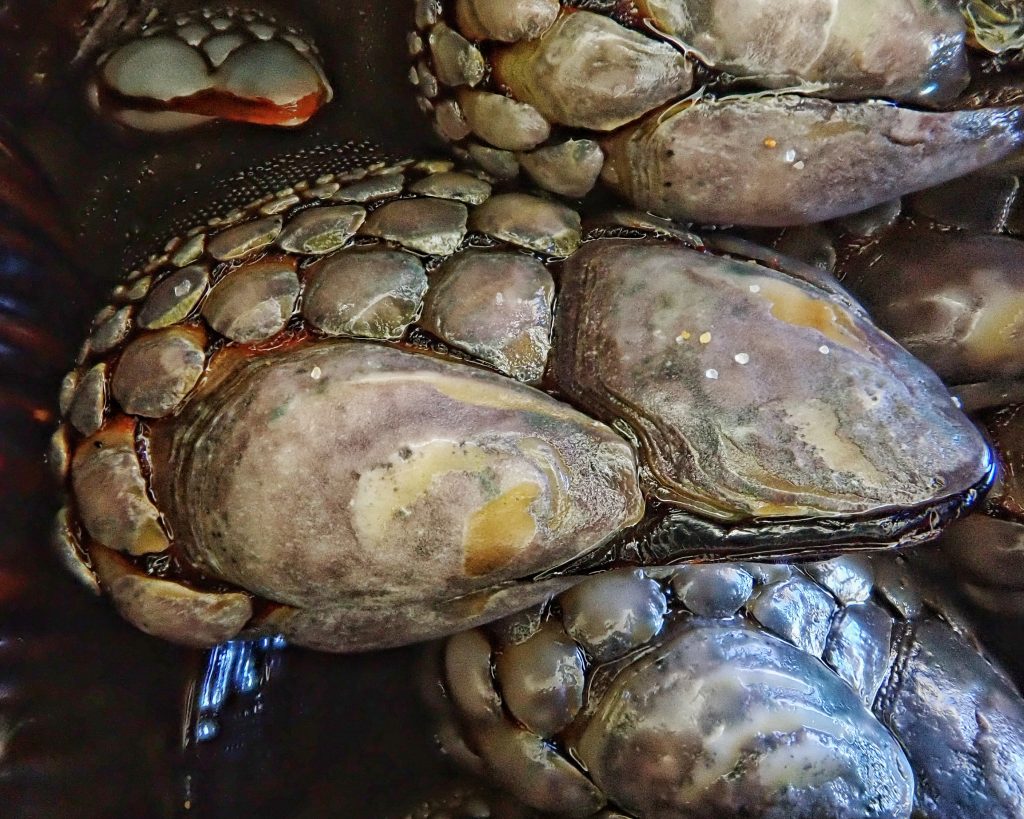
https://animaldiversity.org/accounts/Pollicipes_polymerus/
https://www.centralcoastbiodiversity.org/goose-neck-barnacle-bull-pollicipes-polymerus.html
https://inverts.wallawalla.edu/Arthropoda/Crustacea/Maxillopoda/Cirripedia/Pollicipes_polymerus.html
https://en.m.wikipedia.org/wiki/Pollicipes_polymerus
https://www.ncbi.nlm.nih.gov/pmc/articles/PMC3574338/
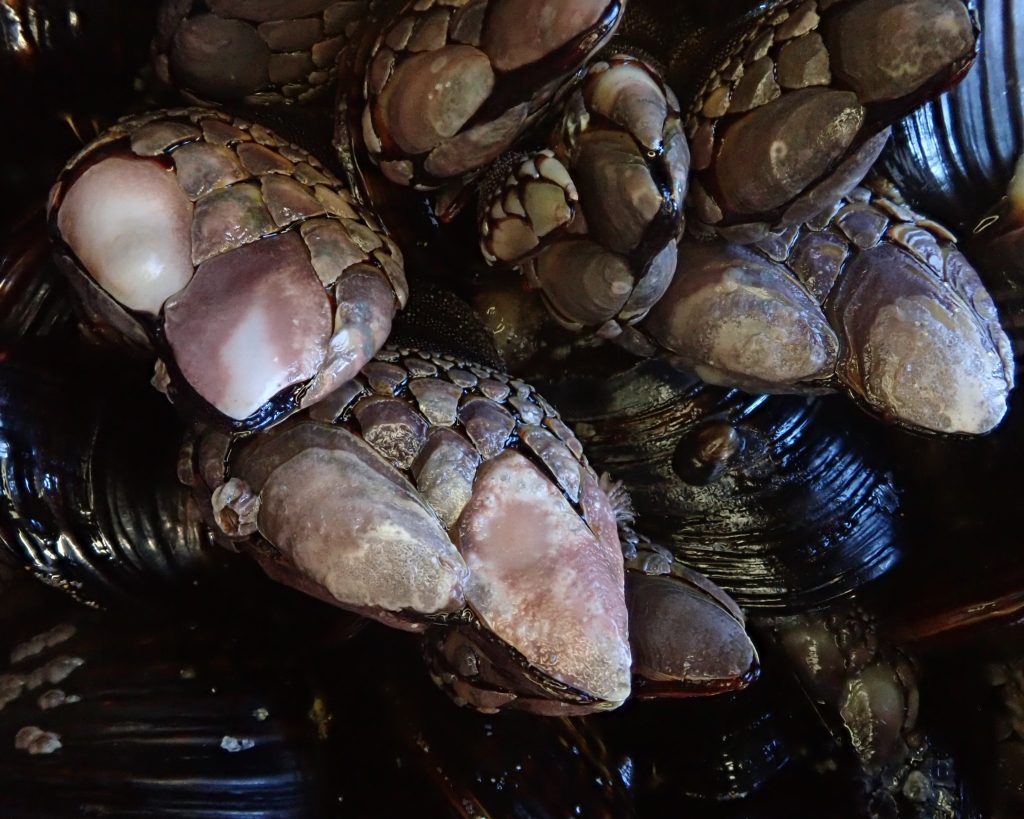
Excellent post today! Thanks!
Thank you Michael!